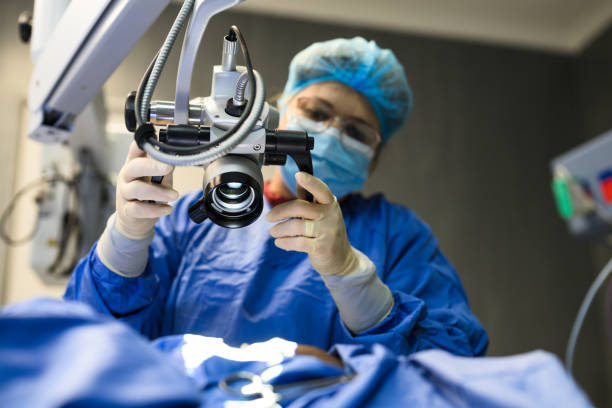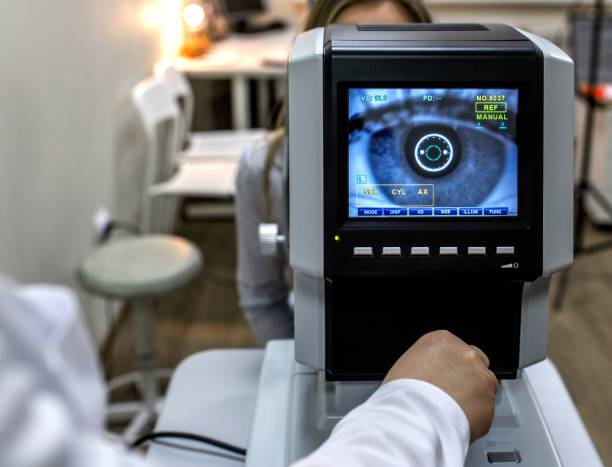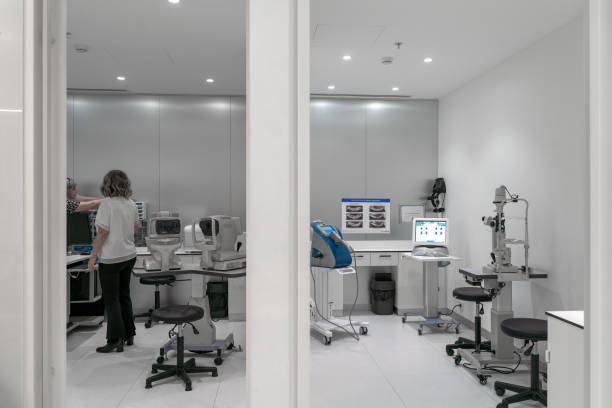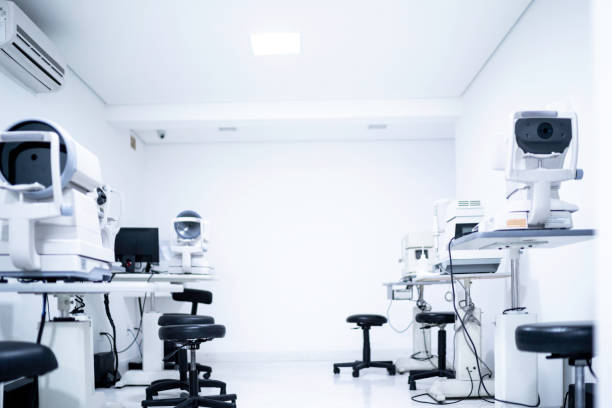Introduction
Your eyes are your window to the world. For many, clear vision means freedom, confidence, and a better quality of life. Being able to see well affects everything—reading, driving, working, and even enjoying simple moments with family and friends. When vision starts to fade, daily life can feel limited. But thanks to modern science, eye care has advanced far beyond glasses and contact lenses.
Today, people with vision problems have access to life-changing eye treatments that were once only a dream. Procedures like laser eye surgery, cataract removal, and corneal transplants give lasting results. New therapies for conditions such as glaucoma, macular degeneration, and dry eye are also improving comfort and restoring sight. From advanced surgeries to innovative drug therapies, modern eye treatments are helping millions see clearly again.
In this article, we’ll explore the latest breakthroughs in eye care, how they work, and why they’re transforming lives. By understanding your options, you can take the right steps toward protecting your vision and enjoying a brighter future.
Why Modern Eye Treatments Matter
Vision problems affect more than 2.2 billion people worldwide, according to the World Health Organization. Poor eyesight doesn’t just limit daily activities like reading, driving, or using a computer—it can also affect mental health, productivity, and overall well-being. People with vision loss are more likely to experience stress, anxiety, and even depression because daily tasks become harder and independence is reduced.
Traditional solutions like glasses or contact lenses can help, but they don’t address the root cause of most eye conditions. They act more like a temporary fix rather than a true solution. That’s where modern eye treatments come in. These advanced solutions go beyond simple correction. They target the actual problem, whether it’s a cloudy lens, a damaged cornea, or pressure inside the eye. In many cases, these eye treatments provide long-term or even permanent results, restoring vision, boosting confidence, and giving people back their freedom.

LASIK: Clear Vision Without Glasses
One of the most popular eye treatments today is LASIK (Laser-Assisted In Situ Keratomileusis). This laser surgery reshapes the cornea to correct common vision problems such as:
- Nearsightedness (myopia)
- Farsightedness (hyperopia)
- Astigmatism
Benefits of LASIK
- Quick procedure, usually under 30 minutes
- Minimal discomfort and fast recovery
- Most patients achieve 20/20 vision or better
- Freedom from glasses and contact lenses
According to the American Refractive Surgery Council, over 95% of LASIK patients are satisfied with their results. That makes it one of the most successful elective surgeries in the world.
Cataract Surgery: Restoring Sight for Millions
Cataracts are a leading cause of blindness, especially in older adults. They cloud the natural lens of the eye, making vision blurry and dim. Fortunately, modern cataract surgery offers a safe and effective solution.
How It Works
- The cloudy lens is removed.
- A clear artificial lens (called an intraocular lens or IOL) is implanted.
- Vision is restored—often better than before the cataract developed.
Key Advantages
- Quick recovery (most people resume normal activities within a few days).
- High success rate with very low risk.
- Advanced IOLs can even correct presbyopia and astigmatism.
The National Eye Institute reports that cataract surgery is one of the most common and safest surgeries performed worldwide.
Corneal Transplants: A New Beginning
For patients with damaged or scarred corneas, a corneal transplant can bring back clear vision. This involves replacing the damaged cornea with healthy donor tissue.
Types of Corneal Transplants
- Full-thickness transplant (PK): Entire cornea is replaced.
- Partial-thickness transplant (DSEK, DMEK): Only damaged layers are replaced, leading to faster recovery.
These techniques allow patients with severe corneal disease to regain vision and improve quality of life.
Advanced Glaucoma Treatments
Glaucoma is often called the “silent thief of sight” because it causes vision loss without early symptoms. Modern eye treatments now make it easier than ever to manage this condition.
Options Include:
- Laser therapy: Improves fluid drainage from the eye.
- Minimally invasive glaucoma surgery (MIGS): Small implants lower eye pressure with fewer risks than traditional surgery.
- New medications: Provide better pressure control with fewer side effects.
These eye treatments are helping patients preserve their vision and maintain independence.

Retinal Treatments: Saving Sight from Within
The retina is critical for vision, and conditions like macular degeneration or diabetic retinopathy can severely damage it. Thankfully, modern medicine offers hope.
Breakthrough Therapies
- Anti-VEGF injections: Slow or stop abnormal blood vessel growth in the retina.
- Laser therapy: Seals leaking blood vessels.
- Retinal surgery: Repairs detached or damaged retinas.
The American Academy of Ophthalmology highlights that anti-VEGF drugs have saved the sight of millions of people worldwide.
Dry Eye Treatments: Relief for Daily Comfort
Dry eye may sound minor, but it can make life uncomfortable. Luckily, new eye treatments go beyond artificial tears.
Modern Solutions
- Prescription eye drops that improve tear production.
- Punctal plugs to keep natural tears in the eye longer.
- Light therapy (IPL) to reduce inflammation and improve tear flow.
These eye treatments help patients enjoy lasting comfort instead of temporary relief.
Gene and Stem Cell Therapies: The Future of Eye Care
One of the most exciting frontiers in eye care is gene therapy. By targeting the root cause of inherited eye diseases, doctors can restore vision at the genetic level.
- Luxturna, approved by the FDA, treats a rare inherited form of blindness by replacing a faulty gene.
- Stem cell research is exploring ways to regenerate damaged eye tissue, offering hope for conditions once thought untreatable.
These breakthroughs represent a new era in eye care—one where blindness could become preventable for future generations.
Choosing the Right Eye Treatment
With so many modern options available, how do you know which one is right for you? Choosing the best eye treatment depends on several important factors.
- The specific eye condition: Different eye treatments target different problems. For example, LASIK is ideal for vision correction, cataract surgery removes clouded lenses, and anti-VEGF injections treat retinal diseases. Understanding your exact condition helps narrow down the options.
- Your age and lifestyle: Some procedures are better suited for younger patients, while others are more effective for older adults. Your daily habits, work, and hobbies also play a role. For instance, athletes may prefer eye treatments with faster recovery times.
- Overall health: Certain medical conditions, like diabetes or high blood pressure, can affect which treatments are safe or effective. Your general health helps your doctor decide on the best approach.
- Doctor recommendations: A qualified eye specialist can guide you through the options, explain potential risks, and recommend treatments tailored to your needs. Getting expert advice ensures you make a safe and informed choice.
By considering these factors, you can find a treatment that not only improves your vision but also fits your lifestyle and long-term health goals.
Tips for Making the Best Decision
Taking the right steps can make a big difference in protecting your vision and choosing the best modern eye treatment.
- Get a comprehensive eye exam every year: Regular checkups help detect problems early, even before you notice symptoms. Early detection can prevent vision loss and make treatment more effective.
- Ask your doctor about all available options, not just the most common ones: Modern eye care offers many treatments, from laser surgeries to advanced drug therapies. Knowing every possibility helps you make an informed choice that fits your needs.
- Consider long-term benefits and risks: Some procedures may provide immediate results, while others offer lasting improvement over time. Weighing both benefits and potential side effects ensures you choose a safe and effective treatment.
- Look for a specialist with strong experience in the procedure: Experienced eye surgeons or specialists are more likely to provide better outcomes and reduce complications. Choosing a trusted professional is one of the most important steps in eye care.
Following these steps helps you take control of your eye health and increases the chances of achieving clearer vision and a better quality of life.

The Life-Changing Impact of Modern Eye Treatments
These modern solutions are more than just medical procedures—they’re true life changers. People who undergo treatments like LASIK, cataract surgery, or retinal therapy often experience benefits that go far beyond improved eyesight.
- Greater independence in daily life: Tasks like cooking, reading, driving, or using a computer become easier and safer. Patients no longer have to rely on glasses or contacts for every activity.
- Higher confidence and emotional well-being: Clear vision can reduce stress and anxiety, boost self-esteem, and improve overall mental health. Feeling confident in your eyesight makes everyday interactions more enjoyable.
- Improved work performance: Being able to see clearly at work or school can enhance productivity, reduce mistakes, and allow for more focus and efficiency.
- Renewed ability to enjoy hobbies: Activities like reading, sports, or driving, which might have felt challenging before, become pleasurable again. Patients often rediscover hobbies and experiences they had given up.
Clear vision isn’t just about seeing better—it’s about living better. Modern eye treatments restore not only eyesight but also the freedom, confidence, and quality of life that come with it.
Conclusion: A Brighter Future for Your Eyes
Modern eye treatments are opening doors to a world that once seemed lost to blurry vision or blindness. With advances in technology and medical research, conditions that used to limit independence can now be treated effectively. Whether it’s LASIK giving freedom from glasses, cataract surgery restoring clear sight, or cutting-edge gene therapy bringing hope to the blind, today’s eye care options are more powerful and precise than ever. Even complex conditions like glaucoma, diabetic retinopathy, and macular degeneration now have treatments that can preserve or improve vision.
These breakthroughs are not just about seeing clearly—they’re about improving your overall quality of life. Clear vision allows you to work efficiently, enjoy hobbies, travel safely, and connect more fully with family and friends. The emotional and practical benefits are life-changing.
If you’ve been struggling with your eyesight, don’t wait. Schedule a comprehensive eye exam today and talk to your doctor about the latest modern eye treatments. Understanding your options could open the door to better vision, greater independence, and a brighter future.
👉 Your vision matters—take the first step today toward clearer, healthier eyes.

